

24/02/2022 Jewellery & Gems
Opal is unique amongst the gemstones, many of which are crystalline. Opals are made up of many tiny spheres of silica attached to water and formed in a lattice arrangement with space in between them. It is this arrangement that causes light to bend or refract and split into its component parts much like you see in a rainbow. The 'fire' or flash of colours in an opal is lots of tiny little rainbows all mixed up together. The size of the spheres which vary, determine the colour that you see; from red to blue, green, yellow / orange etc. The display of colour in Opals has always fascinated me and the unusual effects such as this play of colour are one of my favourite things about gemmology and gemstones.
The stronger the play of colour the more desirable the stone. The colours displayed affect the value and desirability; the more red reflected the more desirable, while green and blue are more common so less so.
The colour of the 'body' of the opal is important too with 'black' opals (having a dark green, grey or black tone) being more desirable than 'white' opal which has a lighter body colour. There is also 'water' opal which has a clear body and 'fire' opal which has a deep orange body colour with or without a play of colour. Fire opal comes from Mexico whereas Australia is probably the most famous source of other types of opal occurring in crack and fissures in the ground.
Opal was a symbol of fidelity and assurance among the ancients but unfortunately suffered a bad reputation in the 18th and 19th centuries as bringing misfortune and back luck, thankfully this superstition has faded as this stone really is a delight and wonder of nature.
It is a relatively soft stone so must be treated with care, it is also porous so must never be submerged in water for long so do not wear it in the bath or washing up. There are many imitations on the market also so make sure to buy your opal from a reputable source.
Opal is often found paired with garnet in Victorian jewellery much like lot 8 in our forthcoming sale.
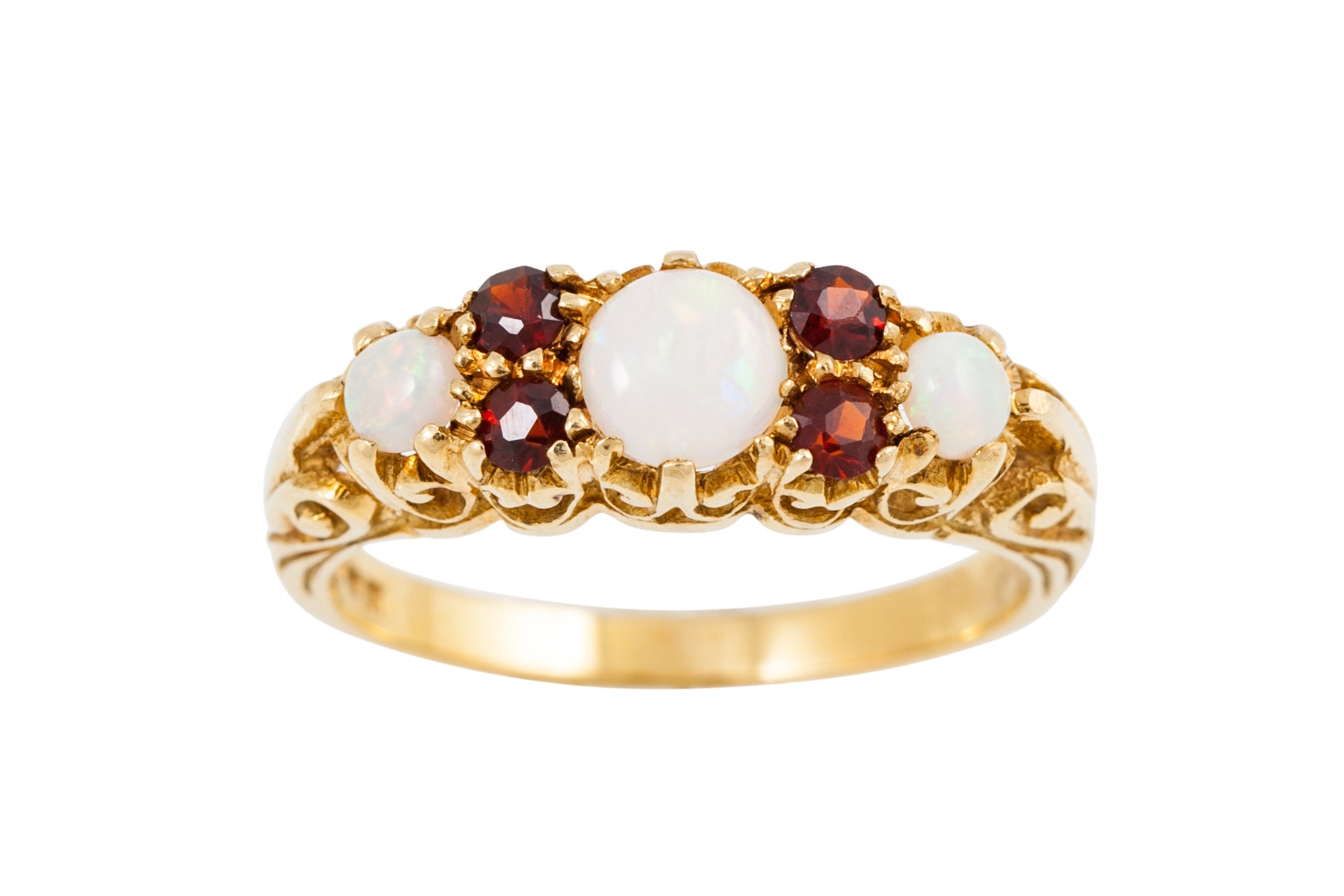 Lot 8
Lot 8
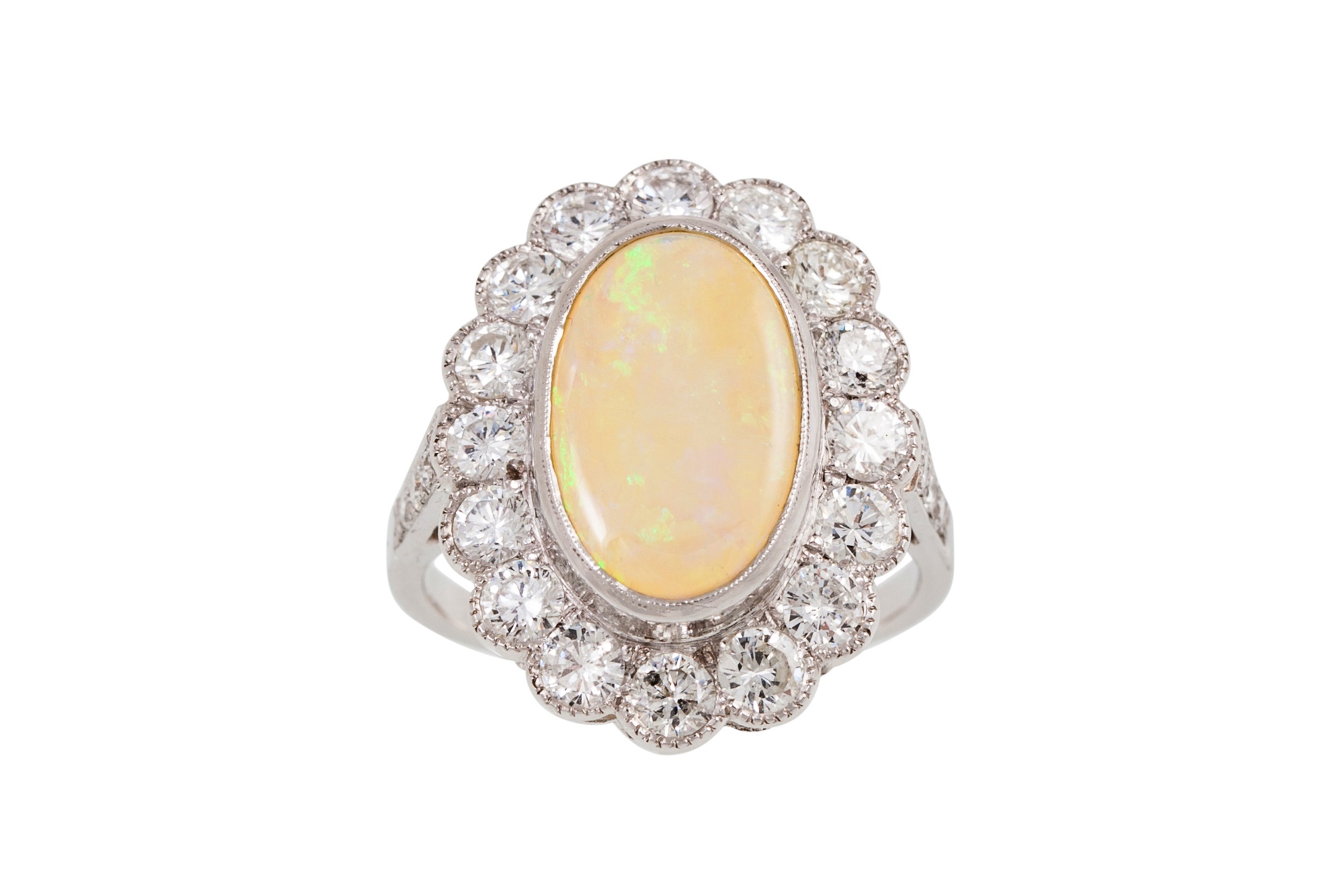
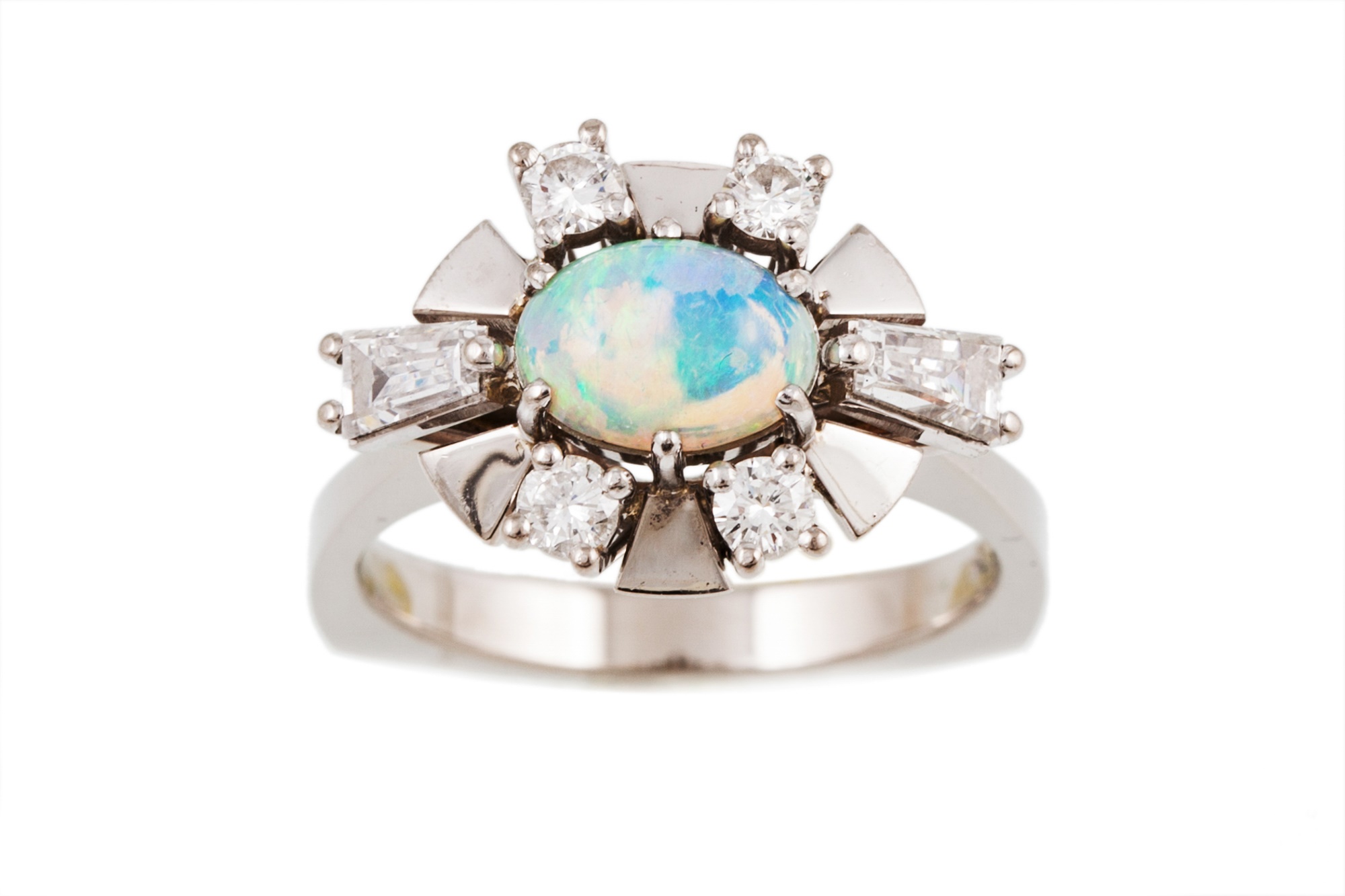
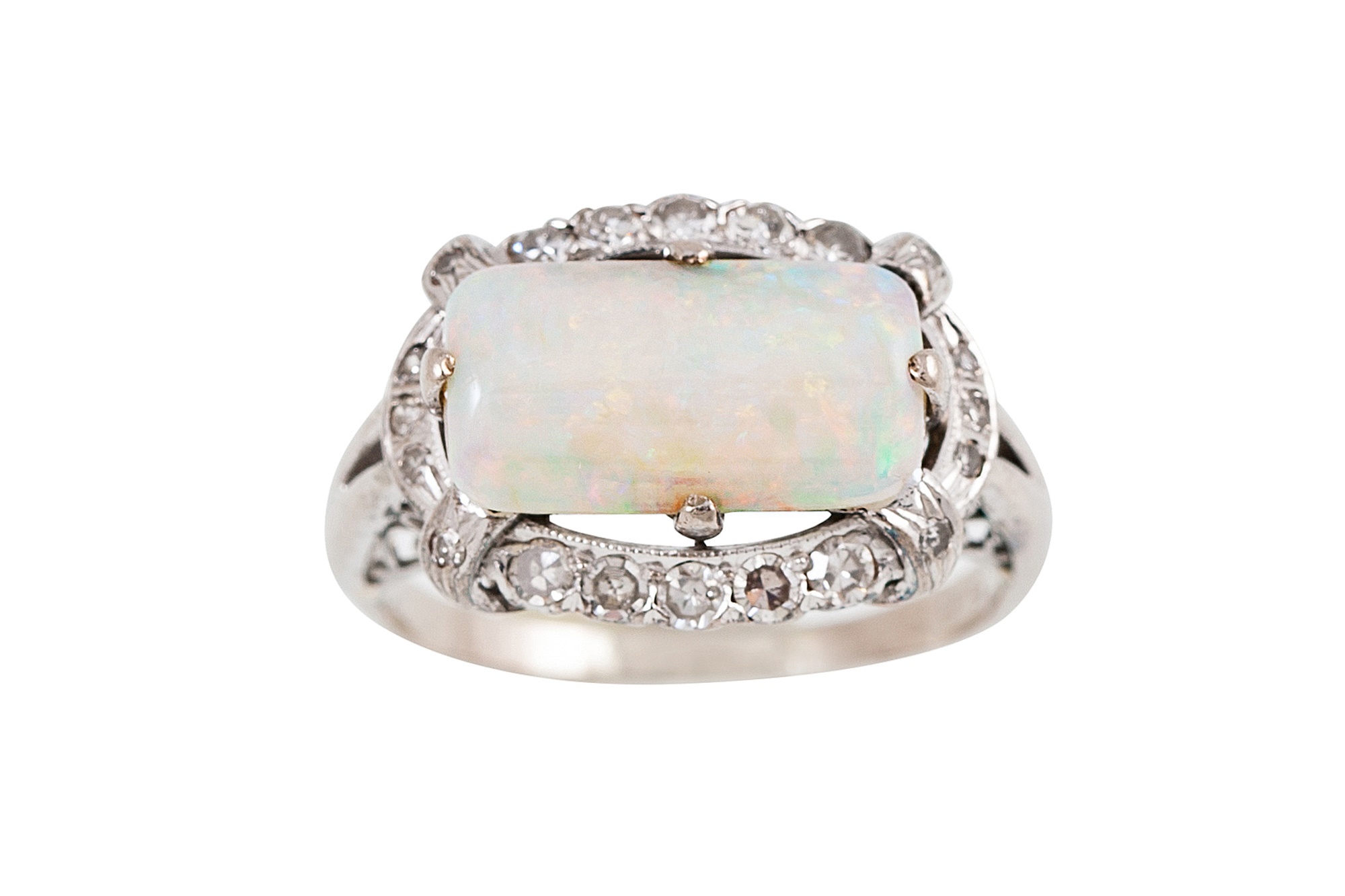
It is also commonly found in a cluster with diamonds which complement the stone beautifully; lot 158 is a fine example of this, a less expansive example can be found in lot 402 and a very pretty and unusual vintage ring in lot 42.
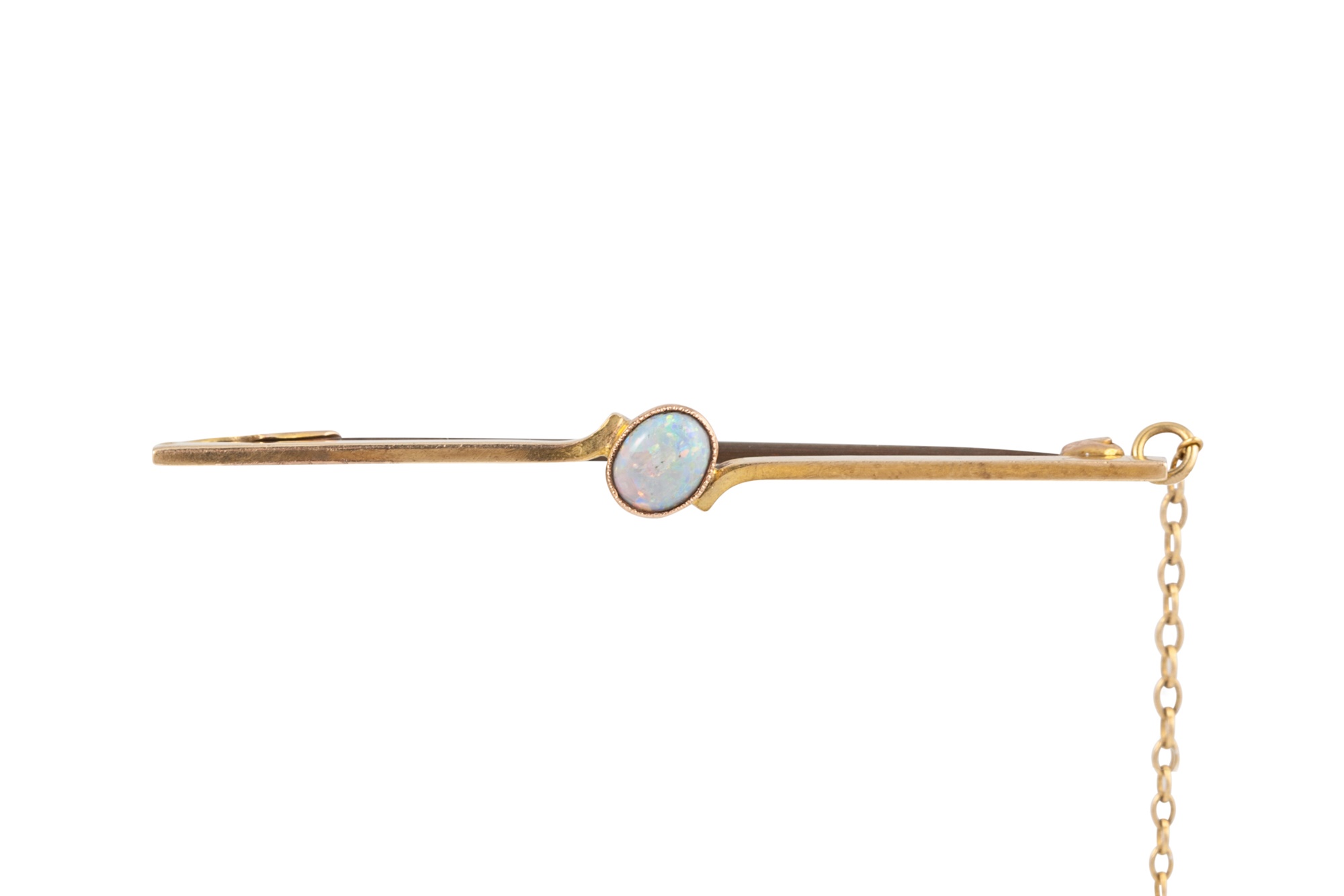
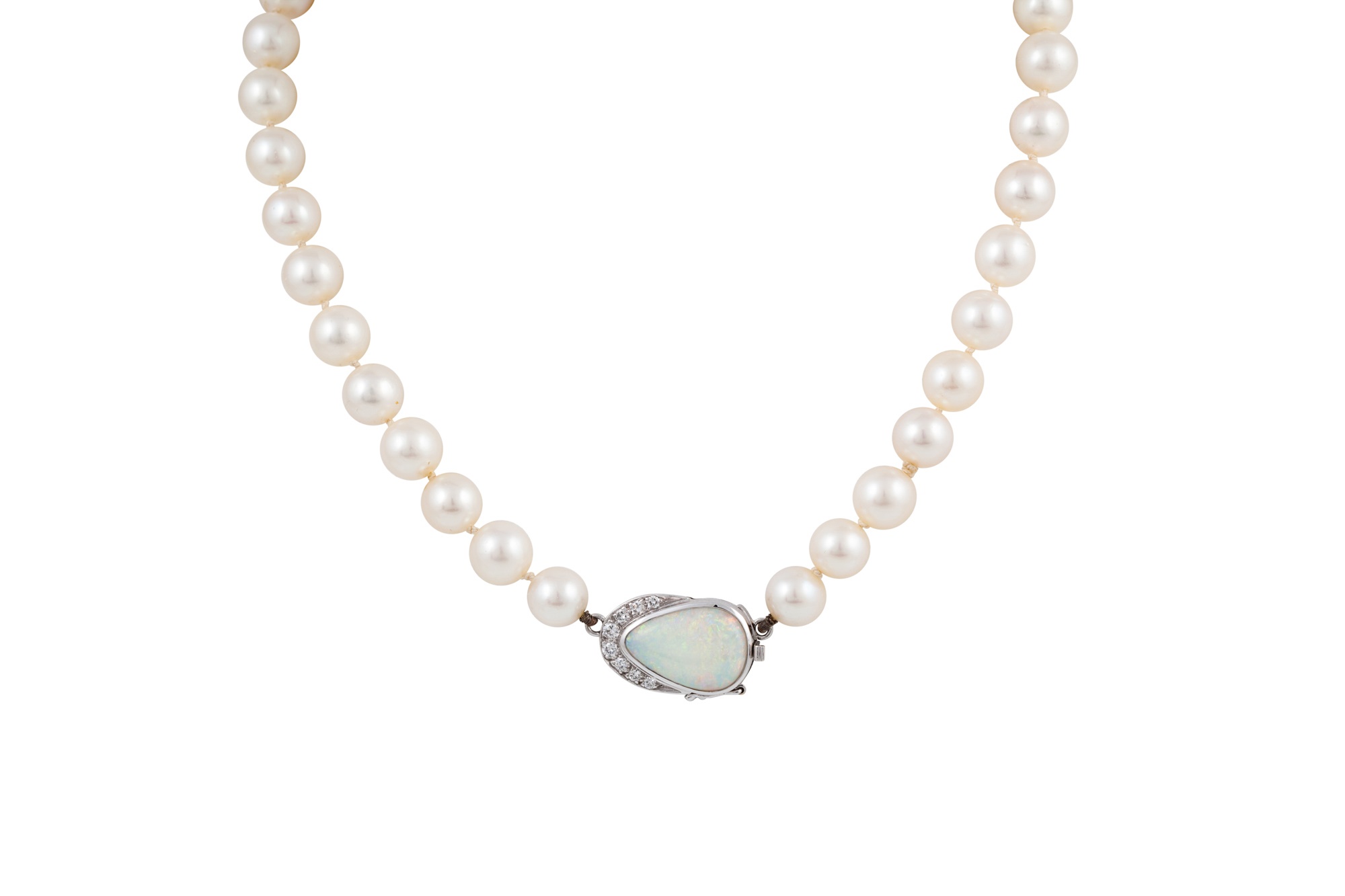
Lot 185 is a very sweet bar brooch with a lively opal in it and lot 399, the pearls sport a fine opal and diamond clasp.